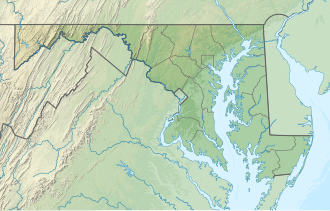| Elk Neck State Park | |
|---|---|
 | |
| Location | Cecil County, Maryland, United States |
| Nearest town | North East, Maryland |
| Coordinates | 39°29′14″N75°59′24″W / 39.48722°N 75.99000°W [1] |
| Area | 2,369 acres (959 ha) [2] |
| Elevation | 262 ft (80 m) [1] |
| Established | 1936 |
| Administered by | Maryland Department of Natural Resources |
| Designation | Maryland state park |
| Website | Official website |

Elk Neck State Park is a public recreation area located between Chesapeake Bay and the Elk River near the southern tip of the Elk Neck Peninsula in Cecil County, Maryland. The state park is home to the historic Turkey Point Light and offers land-based and water-based recreation. [3] The park is located on MD 272, eight miles (13 km) south of the town of North East, and 13 miles (21 km) south of exit 100 on I-95. It is operated by the Maryland Department of Natural Resources.
